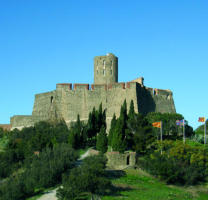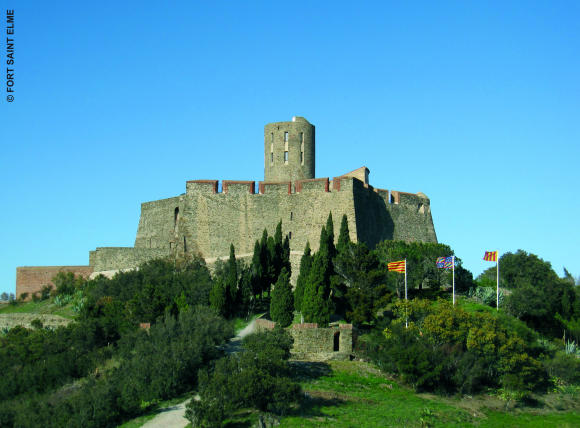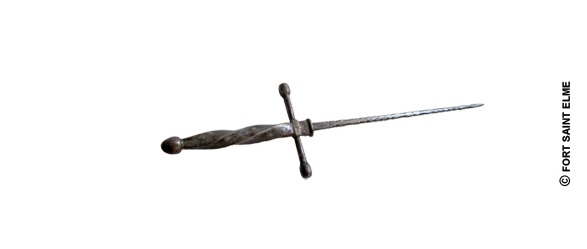
We are so accustomed to character assassination these days that we don’t even bother to consider the tools of the trade: lies, manipulation, insinuations, rumors, half-truths, out-of-context gotchas, and pseudo-journalism.
There was a simpler time, when a man was put out of his misery with a particular kind of long, pointed dagger that fit nicely under the slits in his armor around his neck or under his armpit or through his coat of mail. They are called misericordes and stilettos, and a number of them are on display among the collection of medieval weaponry and armor at the Fort Saint Elme which overlooks the Mediterranean on a hill between Collioure and Port-Vendres, just north of Banyuls and the Spanish border.

The site of Fort Saint Elme has been a strategic position since the 9th century, first as a watchtower keeping an eye out for invaders from the sea then as a border position between the Kingdom of France and the Kingdom of Aragon/Catalonia/Spain or the Spanish portion of the Holy Roman Empire. After centuries of shifting rule in Roussillon, the region was finally integrated within the French crown with the Treaty of the Pyrenees in 1659, after which the defenses at Fort Saint Elme were reinforced to guard against Spanish attack.
The fort has among its weaponry a collection of stilettos and misericordes that were used by the troops of Charles Quint, Holy Roman Emperor and sworn enemy of the Kings of France Francis I and Henri II, during battles on the Italian front and in the north of France.
Misericordes and stilettos were specifically created to kill adversaries protected by armor and coats of mail. Their sleek design allowed them to slip between or even perforate the metal plates of armor.

The medieval stiletto is a dagger about 6 to 8 inches long with a thin triangular blade designed to pierce a coat of mail and strike a man’s chest, preferably his heart. If the adversary didn’t die immediately the wound would likely be deep enough that it wouldn’t heal and would prove mortal.
The stiletto was also the arm of predilection for assassins and traitors because it could easily be hidden inside a sleeve or under a coat or, for the fashionable assassin in northern climes, a fur hand-warming muff.
The misericorde, with a blade about 6 to 14 inches long, about 1.5 to 3 inches at his base, resembles a wide knife. Ideal, then, for slitting an adversary’s throat by passing through openings and links in his armor, such as the gorget at the neck, around which the misericorde could be thrust to open the throat like a tin can.
The misericorde (or misericord) was both an arm for killing and a cry to keep from being killed. The word means “mercy.” “Miséricorde” was what a combatant who has been struck to the ground would cry out when he saw a blade drawing to his throat. It was supposed to save him as it meant that he was asking for mercy and giving himself up as a hostage who could then be held for ransom. Unless of course the fellow with the dagger was deaf, as was the case of one Claude de Beaumont who, on January 5, 1477, during the Battle of Nancy, coldly killed the Duke of Burgundy Charles the Bold without hearing that the latter was wounded and crying “Miséricorde.”

By extension of the cry for mercy, soldiers gave name misericorde* to the arm that was used on the battlefield to finish off a severely wounded man who might otherwise be left to die in agony. God, it was said, granted his misericorde / mercy / pardon to he who, in delivering the mercy stroke, the coup de grâce, mercy stroke, recognized his guilt by so killing another.
How that would work with the contemporary tools of character assassination in the name of righteousness is anyone’s guess.
Fort Saint Elme, between Collioure and Port-Vendres in the region of Roussillon. Tel. 06 62 64 11 76 or 06 64 61 82 42. Open April -Sept. 10:30am-7pm, Oct.-Nov. 11 2:30-7pm. 6€, 3€ for students.
* Another type of merciful misericord is the wooden (or otherwise) projection from an upturned church seat that allows congregants to remain partially seated during standing worship.

